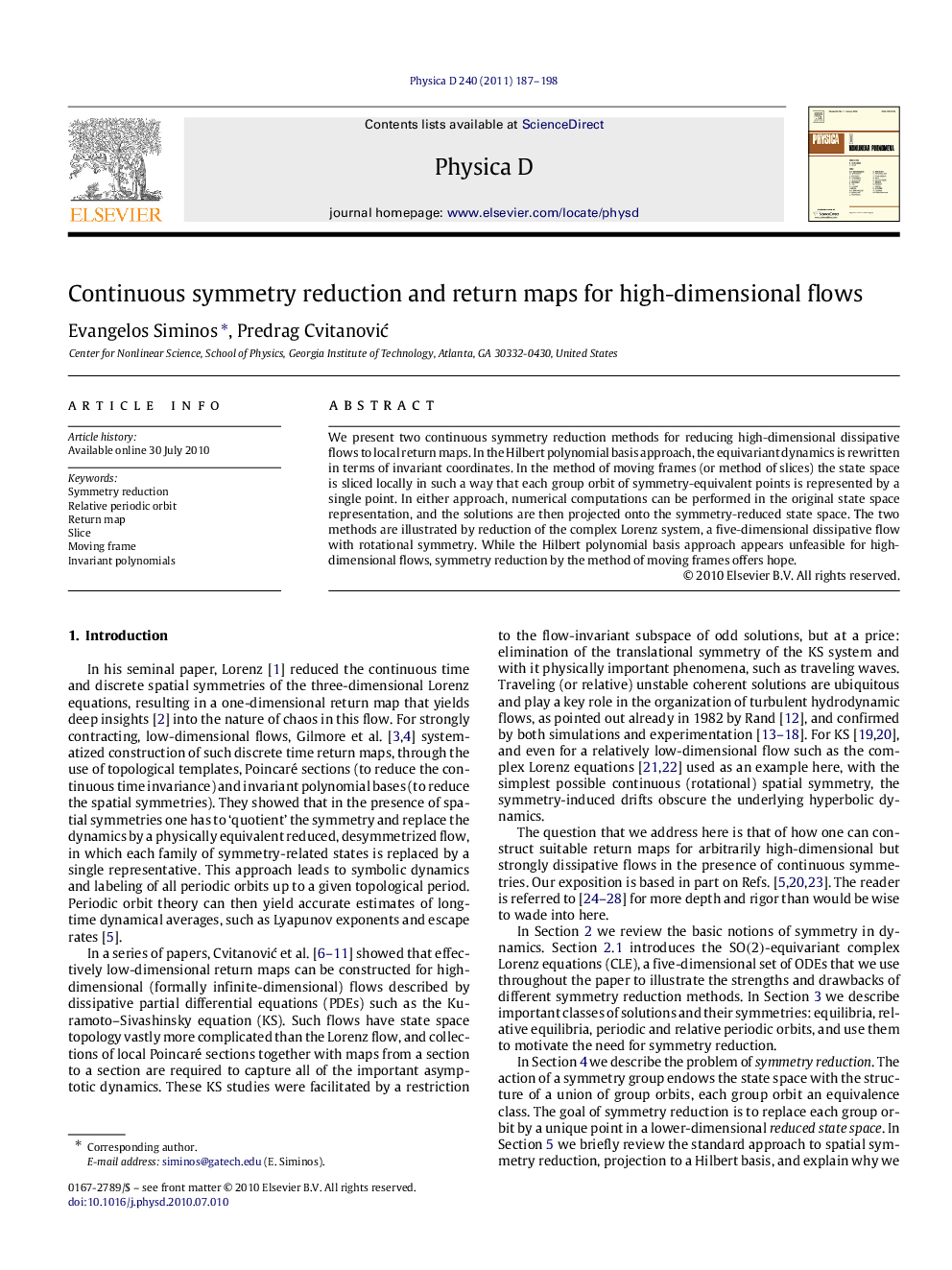| Article ID | Journal | Published Year | Pages | File Type |
|---|---|---|---|---|
| 1896381 | Physica D: Nonlinear Phenomena | 2011 | 12 Pages |
We present two continuous symmetry reduction methods for reducing high-dimensional dissipative flows to local return maps. In the Hilbert polynomial basis approach, the equivariant dynamics is rewritten in terms of invariant coordinates. In the method of moving frames (or method of slices) the state space is sliced locally in such a way that each group orbit of symmetry-equivalent points is represented by a single point. In either approach, numerical computations can be performed in the original state space representation, and the solutions are then projected onto the symmetry-reduced state space. The two methods are illustrated by reduction of the complex Lorenz system, a five-dimensional dissipative flow with rotational symmetry. While the Hilbert polynomial basis approach appears unfeasible for high-dimensional flows, symmetry reduction by the method of moving frames offers hope.
